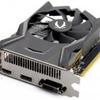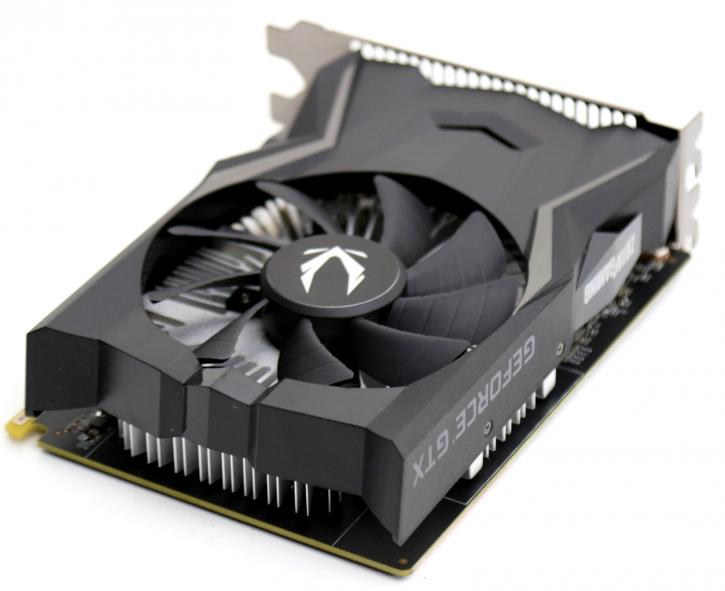Introduction
Zotac Gaming GeForce GTX 1650 4G review
We review the Zotac GeForce GTX 1650 Gaming, this incredibly small GeForce GTX 1650 has been fabbed to be a budget-friendly product, with an extremely small and compact size. We're talking less than 15cm here. The single fan product is energy friendly as well, there's no need for even a power connector as it feeds from the 75 Watt PCIe power slot.
The GeForce GTX 1650 will bear a minimum price tag of roughly US$ 179. These cards are fitted with 4GB GDDR5 memory based upon a 128-bit memory bus. While the clock frequencies of the GPU base and boost frequencies will vary a bit per board partner, the reference base clock speed is close to 1400 MHz. When the first rumors on the GeForce GTX (yes, with a G) surfaced, speculation was everywhere and we had doubts NVIDIA would actually release a new GTX while moving forward towards it's RTX branding. NVIDIA is now injecting Turing based GPUs into the mainstream called TU116 and this new GU117. To make it more affordable NVIDIA stripped away the RTX and DLSS features, that means there are no RT and Tensor cores in these products. It's a fall back towards the original shader design model.
So to quickly recap; the 1650/1660 series is making use of the Turing architecture but will not have Raytracing and Tensor cores, this is why NVIDIA dropped the RTX suffix back to GTX. The GeForce GTX 1650 cards are to occupy a 149 to 179 USD price domain slash pricing level which coincidentally also is occupied by the AMD Polaris 20-based Radeon RX 570 series.
The reference frequencies for the GTX 1650 series are quite decent, with a reference base and boost clocks at 1,485 and 1,665 MHz respectively. The new cards, (if priced right) will serve NVIDIA's entry-level to mainstream segment and should offer a capable 1080p solution. NVIDIA is not distributing a reference design card to the media. Ergo, the reviews you'll see are based on AIB designed partner cards.
Zotac Gaming GeForce GTX 1650 OC 4GB
The 1650 series graphics cards are once again based on Turing architecture, offering just that fundamental shading engine. The GPU has been cut-down, the available memory configurations will be 4GB GDDR5 (8 Gbps) running a 128-bit wide bus. This 70 Watt rated graphics card has 896 active shader processors. It has a proper boost clock in the 1.665 GHz domain and there will be no differentiation for the reference values compared to the AIB partners. Having smaller TU117 silicon it doesn't run too hot and in fact, is really energy efficient. The cooler is following a dual-slot design. The card comes without any power connectors (e.g. 8-pin PCIe). ZOTAC applies a very small cooler for the GeForce GTX 1650 which makes use of a single fan. It might not have any RGB embedded, but it still is an attractive product, easy to drop in. The card offers one of each, HDMI DisplayPort and DCI. This Turing 117 GPU empowered product keeps that GPU at roughly 60 Degrees C marker depending on game load. This compact card is based on an OC model, meaning a stock slightly tweaked Boost clock. The GDDR5 memory has been not been tweaked.


